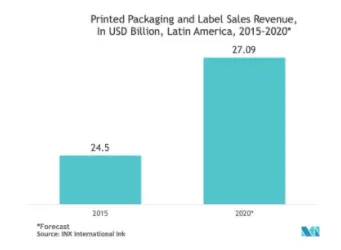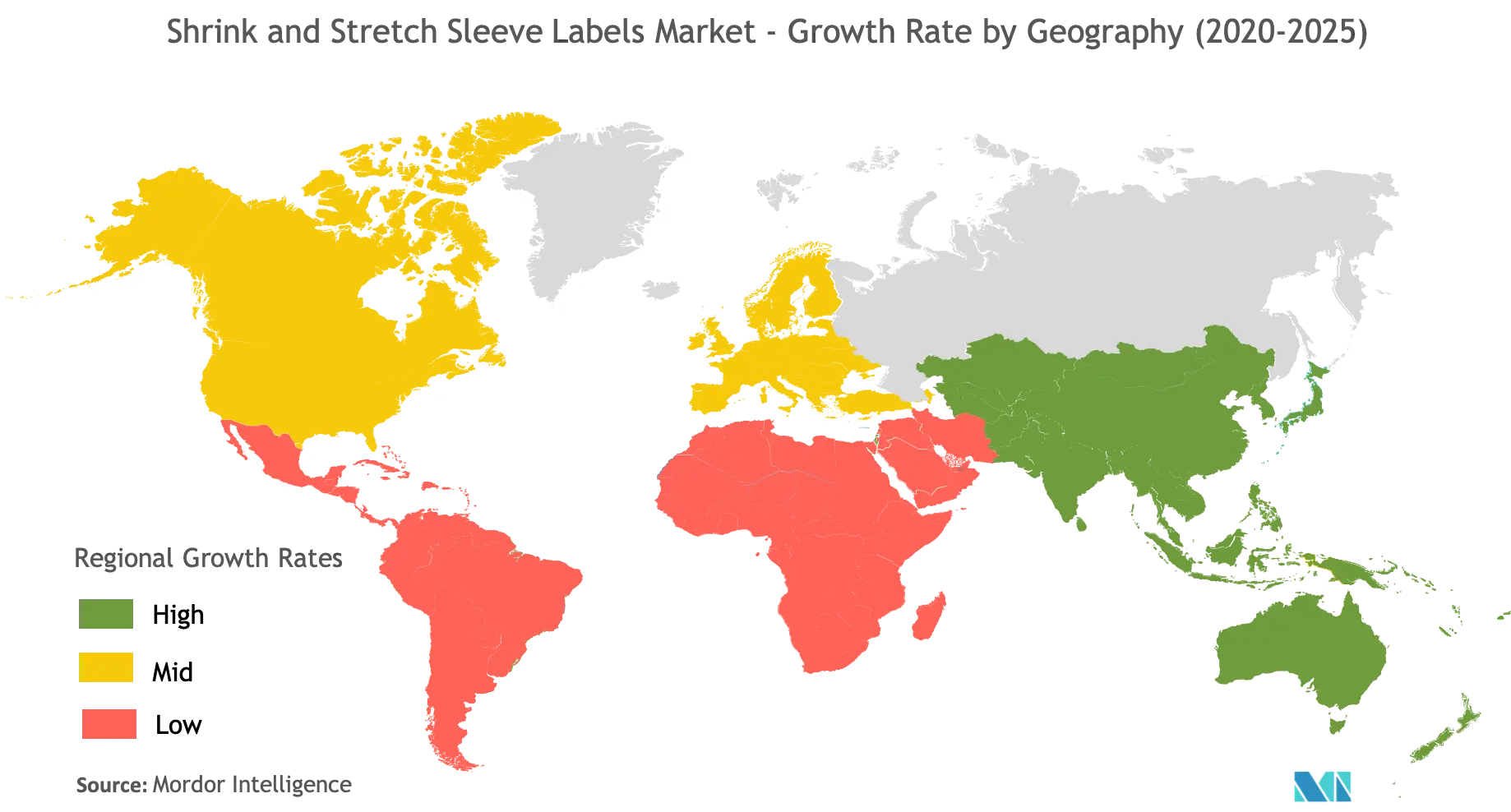Market Trends of Shrink and Stretch Sleeve Labels Industry
This section covers the major market trends shaping the Shrink & Stretch Sleeve Labels Market according to our research experts:
Demand to Increase On-Shelf Appeal of Various Products is Expected to Drive Growth
- Sleeve labels have the advantage over conventional label types in making a product stand out to consumers. Stretch and shrink sleeve labels have enhanced the versatility of conveying brand and safety messaging for packaging designers and brand owners. A sleeve label is applied to a package in multiple ways, from covering just the shoulders or the cap of a container to full-body, 360-degree coverage.
- Extra coverage provided by full-body shrink sleeves ensures space for colorful and eye-catching designs. Full-body sleeves equip product and brand owners with more space to communicate with both current and prospective customers. With tight labeling regulations for both food and pharmaceutical products in place or on the way, having extra space to conform to regulatory standards while maintaining a product’s ability to reach out to consumers is expected to heighten the importance of sleeve labels.
- Further, Shrink Sleeves provide better flexibility to manufacturers to use their shape to enhance marketing appeal. For instance, a twisted shape bottle may be named ‘Twister,’ or orange can be molded in the neck for orange juice. All this can be done while shrink sleeves allow the flexibility for the graphics to enhance bottle design for whatever the purpose the brand is trying to accomplish.
- They allow product-makers to utilize a single colorless container and differentiate products and lines with their labels. The movement to single-serve, smaller doses, and smaller containers is expected to drive the use of shrink sleeve as convenient as a way to get more content across smaller surface areas.

Asia Pacific is Expected to be the Fastest Growing Market
- The Asia-Pacific region has emerged as a significant shrink sleeve & stretch sleeve labels market, primarily driven by India and China's emerging economies. The major driving forces in the Asia-Pacific region include rising urbanized populations, increasing demand for packaged food, easy availability of polymer films, and relatively low labor cast.
- A price-sensitive market like South-East Asia is expected to be a major growth area for the use of shrink and stretch sleeves that are cost-effective solutions for decorating containers with highly complex shapes. Moreover, the easy availability of polymer films and low labor cost is further boosting the market growth.
- In the Asia Pacific region, China and India mainly dominate the market. Across the region, the outbreak of COVID-19 has impacted differently in every country. The manufacturing and production of packaging and labeling industries are only functional in selected countries, where packaging contributes to GDP significantly.
- Further, the region's three major trade associations such as the Federation of Indian Chambers of Commerce and Industry (FICCI), All India Foods Processors' Association, and the US India Strategic Partnership Forum (USISPF, along with big beverage manufacturing companies such as PepsiCo, Coca-Cola, Nestle, and Mondelez, among others have submitted letters to the government requesting for the Food and Beverage manufacturing sector to be deemed as an 'essential service' and thus exempted from restrictions under the lockdown in order to continue production.


